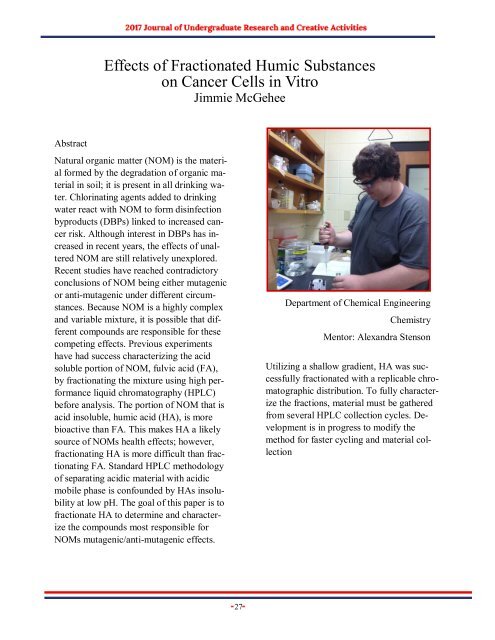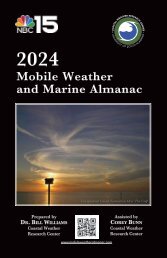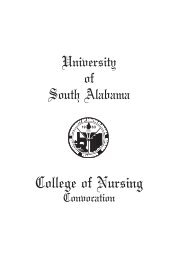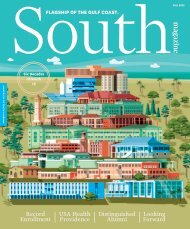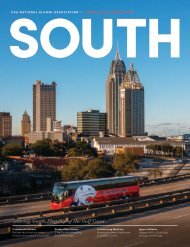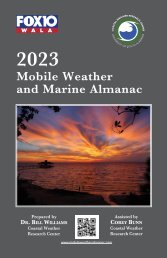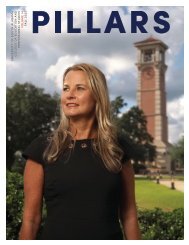JOURACA_SP_2017
Create successful ePaper yourself
Turn your PDF publications into a flip-book with our unique Google optimized e-Paper software.
Effects of Fractionated Humic Substances<br />
on Cancer Cells in Vitro<br />
Jimmie McGehee<br />
Abstract<br />
Natural organic matter (NOM) is the material<br />
formed by the degradation of organic material<br />
in soil; it is present in all drinking water.<br />
Chlorinating agents added to drinking<br />
water react with NOM to form disinfection<br />
byproducts (DBPs) linked to increased cancer<br />
risk. Although interest in DBPs has increased<br />
in recent years, the effects of unaltered<br />
NOM are still relatively unexplored.<br />
Recent studies have reached contradictory<br />
conclusions of NOM being either mutagenic<br />
or anti-mutagenic under different circumstances.<br />
Because NOM is a highly complex<br />
and variable mixture, it is possible that different<br />
compounds are responsible for these<br />
competing effects. Previous experiments<br />
have had success characterizing the acid<br />
soluble portion of NOM, fulvic acid (FA),<br />
by fractionating the mixture using high performance<br />
liquid chromatography (HPLC)<br />
before analysis. The portion of NOM that is<br />
acid insoluble, humic acid (HA), is more<br />
bioactive than FA. This makes HA a likely<br />
source of NOMs health effects; however,<br />
fractionating HA is more difficult than fractionating<br />
FA. Standard HPLC methodology<br />
of separating acidic material with acidic<br />
mobile phase is confounded by HAs insolubility<br />
at low pH. The goal of this paper is to<br />
fractionate HA to determine and characterize<br />
the compounds most responsible for<br />
NOMs mutagenic/anti-mutagenic effects.<br />
Department of Chemical Engineering<br />
Chemistry<br />
Mentor: Alexandra Stenson<br />
Utilizing a shallow gradient, HA was successfully<br />
fractionated with a replicable chromatographic<br />
distribution. To fully characterize<br />
the fractions, material must be gathered<br />
from several HPLC collection cycles. Development<br />
is in progress to modify the<br />
method for faster cycling and material collection<br />
27


